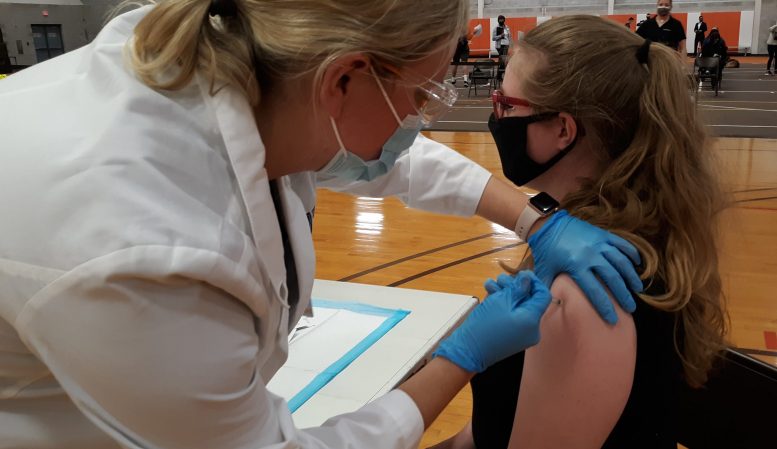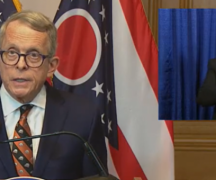Gov. Mike DeWine began to move from sticks to carrots Wednesday when it comes to protecting Ohioans from COVID-19.
The rate of infections is more than double the goal he set for removing pandemic-related restrictions. Even so, DeWine said that on June 2, all orders will expire except those regarding nursing homes and assisted-living facilities.
“It’s time to end the health orders,” DeWine said during a prime-time speech. “It’s been a year.”
The state is far short of several benchmarks the governor and other health officials say should be met before life can return to something like it was in February 2020.
DeWine earlier this year said that the rate of coronavirus cases would have to drop to 50 per 100,000 Ohioans before orders such as the requirement to wear masks indoors in public spaces would be dropped. As of Wednesday, that rate stood at 123 per 100,000 and was dropping at a rate of two to three percentage points a day, the governor said.
DeWine cautioned that even in the absence of state orders, Ohioans might want to keep their masks handy.
“Lifting these orders will not stop businesses from imposing their own requirements,” he said.
And just as it has double the rate of cases the governor originally wanted, only about half as many have been vaccinated as experts say is needed to achieve herd immunity. As of Wednesday evening, 42% of Ohioans had been fully vaccinated, compared to the 70% to 80% that is needed to deny the opportunistic virus a foothold.
The governor may have calculated that he’d gotten as far as he could with health orders that have sparked furor among some Ohioans — including many members of his own party.
Experts’ hopes of achieving herd immunity have been evaporating in recent weeks, with fast-spreading variants of the virus rampaging through parts of the world without widespread access to the vaccine. At the same time, hesitancy to be vaccinated has taken hold among many who do have access.
Also, many other Republican governors, such as Texas’ Greg Abbott, rescinded most pandemic-related health orders more than a month ago. So DeWine might have concluded that they’ve become futile in the Buckeye State.
Instead, the Ohio governor is trying to vaccinate new populations and create new incentives for more to get vaccines.
As of Thursday, children 12 to 15 years old will be eligible for the Pfizer vaccine. That group is responsible for a quarter of all cases in Hamilton County and doctors in Cincinnati warn that some have become sick enough to be hospitalized.
Also, the state will conduct five weekly drawings to provide full scholarships to Ohio’s public universities to college students who have been vaccinated, the governor said.
In addition, the state will hold weekly drawings to give $1 million to each of five Ohio adults who have gotten their shots. DeWine conceded that the idea might sound crazy, but he said what’s really crazy is to risk dying of a disease for which protection is readily available.
As politicians are wont to do, the governor seemed to declare victory as he backed away from his earlier goals.
“For a year, Ohioans have made sacrifices to save lives and keep our state moving forward,” he said in a prepared version of his remarks. “What you have done has really worked! And now, we have a powerful weapon that is almost 100% effective in beating the virus. Simply put, the vaccine is stronger and better than medical experts ever imagined. And now, everyone 12 and over can use it to protect themselves — to put an invisible shield of protection around themselves. Everyone can now control their own health — their own destiny.”





